Two dipoles p1andp2 are placed along the same axis at a distance x apart as shown in (Fig. 3.119). What is the magnitude of the force of interaction ? What is the nature of force, attractive or repulsive ?
 .
.
The correct Answer is:32πε0p1p2x4
Potential energy of system is
U=−→p2.→E21=−p214πε02p1x3cos0=−14πε02p1p2x3

F=−∂U∂x=−64πε0p1p2x4=−32πε0p1p2x4
F comes out to be negative, so it is an attractive force.
Topper's Solved these Questions
- ELECTRIC POTENTIALBOOK - CENGAGE PHYSICS ENGLISHCHAPTER - ELECTRIC POTENTIALEXERCISE - Single Correct
56 Videos
- ELECTRIC POTENTIALBOOK - CENGAGE PHYSICS ENGLISHCHAPTER - ELECTRIC POTENTIALEXERCISE - Multiple Correct
10 Videos
- ELECTRIC POTENTIALBOOK - CENGAGE PHYSICS ENGLISHCHAPTER - ELECTRIC POTENTIALEXERCISE - Exercise 3.3
9 Videos
- ELECTRIC FLUX AND GAUSS LAWBOOK - CENGAGE PHYSICS ENGLISHCHAPTER - ELECTRIC FLUX AND GAUSS LAWEXERCISE - MCQ s
38 Videos
- ELECTRICAL MEASURING INSTRUMENTSBOOK - CENGAGE PHYSICS ENGLISHCHAPTER - ELECTRICAL MEASURING INSTRUMENTSEXERCISE - M.C.Q
2 Videos
Similar Questions
(Figure 3.118) shows two dipole moments parallel to each other and placed at a distance x apart. What is the magnitude of force of interaction ? What is the nature of force, attractive or repulsive ?
 .
.
View SolutionTwo charged particles are placed at a distance 1.0 cm apart. What is the minimum possible magnitude of the electric force acting o each charge?
View SolutionTwo charged particles are placed at a distance 1.0 cm apart. What is the minimum possible magnitude of the electric force acting o each charge?
View SolutionTwo point charge ±q are placed on the axis at x=−a and x=+a, as shown in fig.
(i) Plot the variation of E along the x-axis.
(ii) Plot the variation of E along the y-axis.
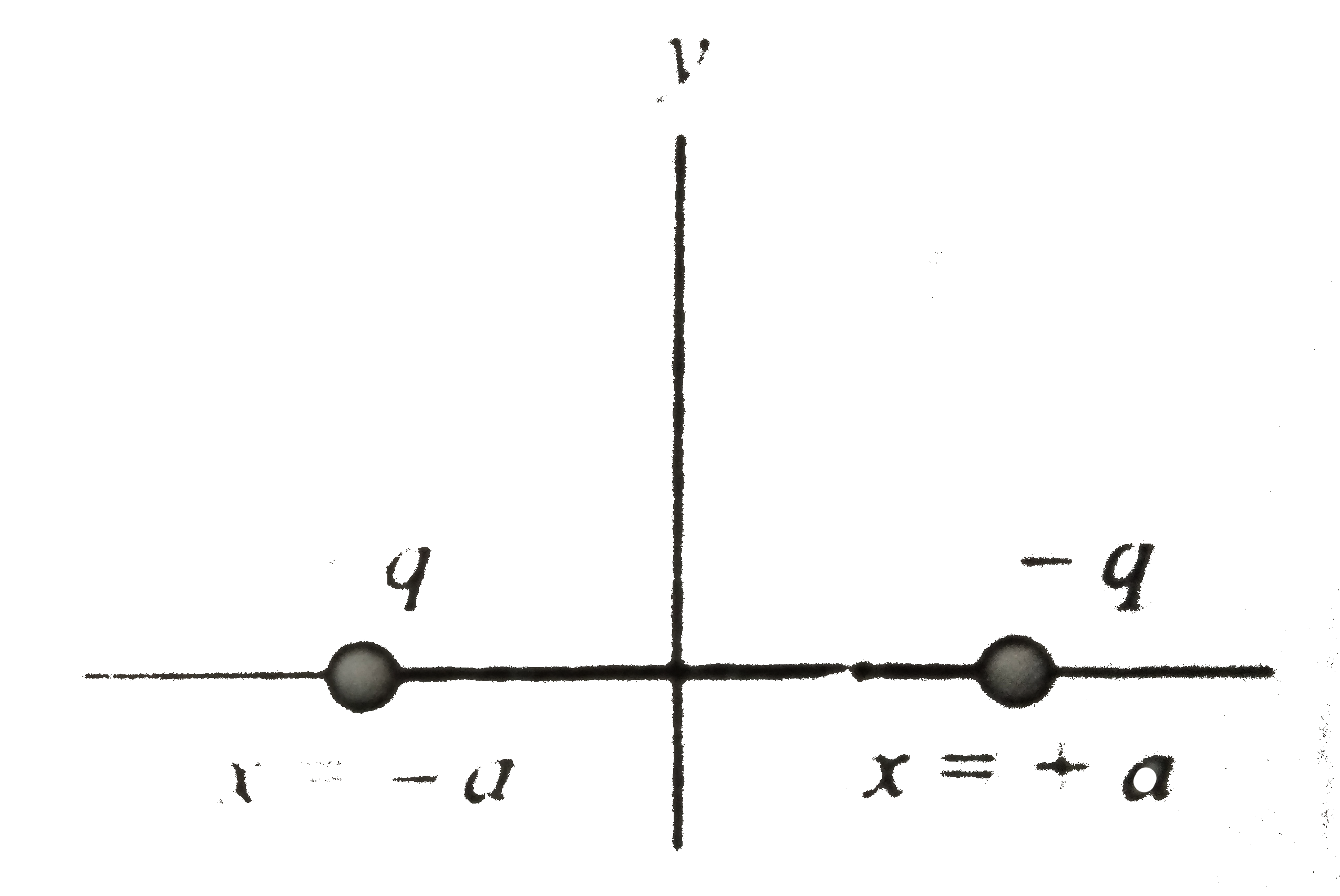
View SolutionTwo long, parallel wires are separated by a distance of 0.400m (as shown in Fig.) The current I1andI2 have the direction shown.

(a) Calculate the magnitude of the force exerted by each wire on a 1.20m length of the other. Is the force attractive or repulsive ?
(b) Each current is doubled, so that I1 becomes 10.0A and I2 becomes 4.00A. Now, what is the magnitude of the force that each wire exerts on a 1.20m length of the other?
View SolutionA proton and an electron are placed 1.6cm apart in free space. Find the magnitude of electrostatic force between them. The nature of this force.
View SolutionThree point masses m1=4kg,m2=3 kg and m3=2 kg,are placed along a straight line along the y-axis as shown in Fig. What is the moment of inertia pf:the system about the x - axis ?
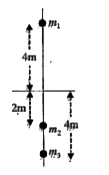
View SolutionAn electron moving with a velocity v along the positive x-axis approaches a circular current carrying loop as shown in the fig. the magnitude of magnetic force on electron at this instant is
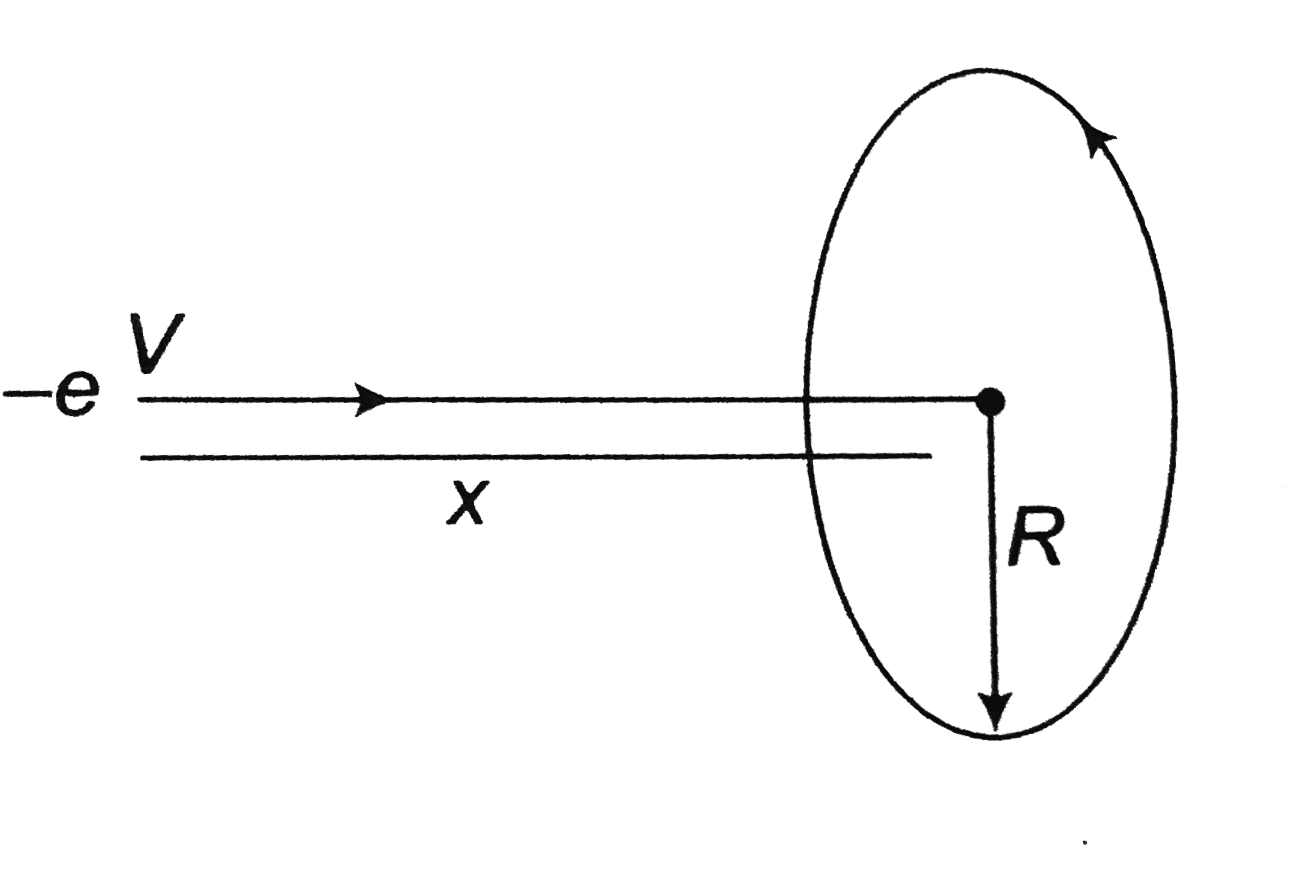
View SolutionTwo small identical electrical dipoles AB and CD, each of dipole moment 'p' are kept at an angle of 120∘ as shown in the figure. What is the resultant dipole moment of this combination? If this system is subjected to electric field overserT(→)E directed along + X direction, what will be the magnitude and direction of the torque acting on this ?
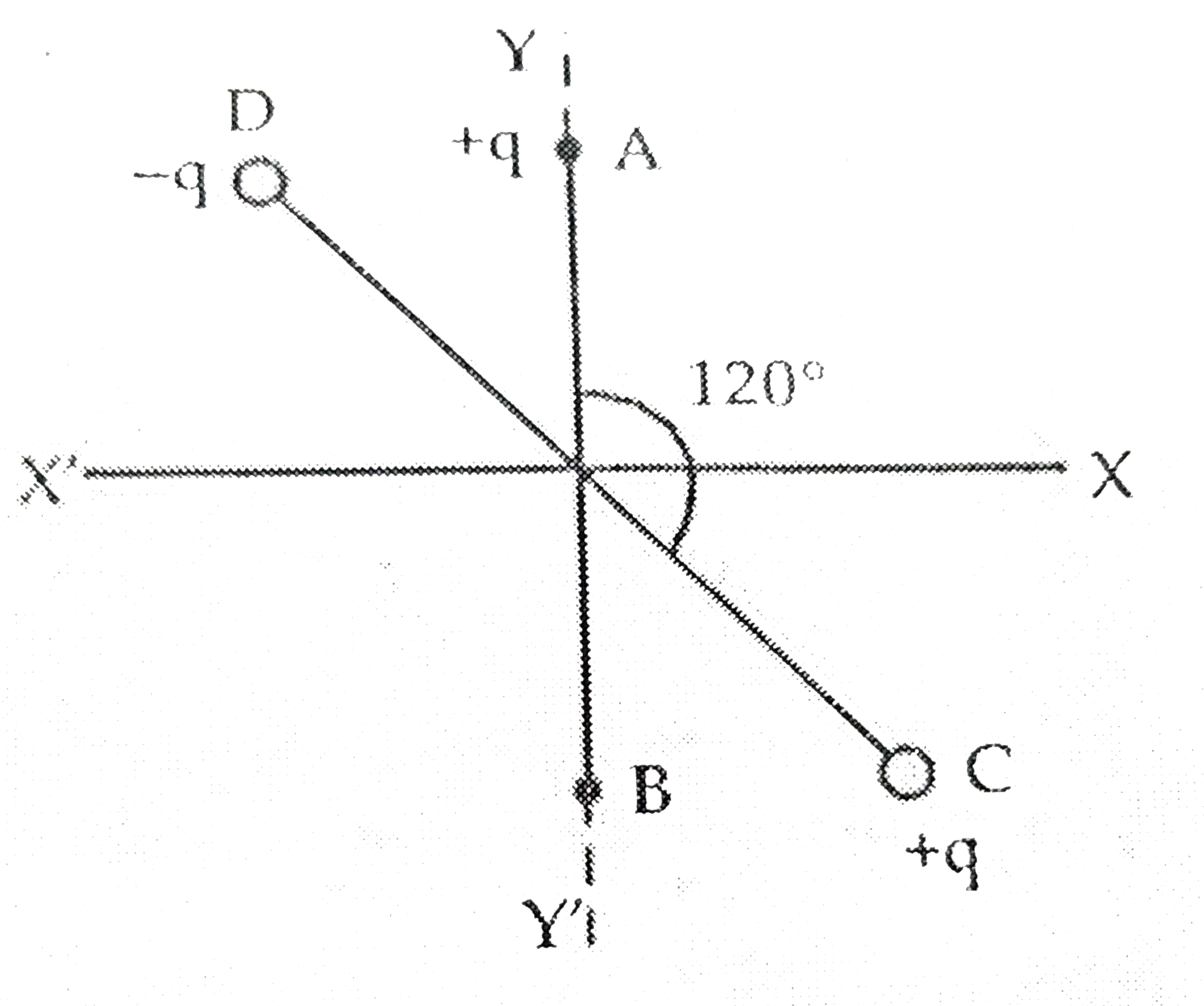
View SolutionThree infinetely long wires 1 , 2 and 3 carry equal currents in the directions shown in fiugre. They are placed on the vertices of an equilateral triangle. Let F be the magnitude of force between any two wires.
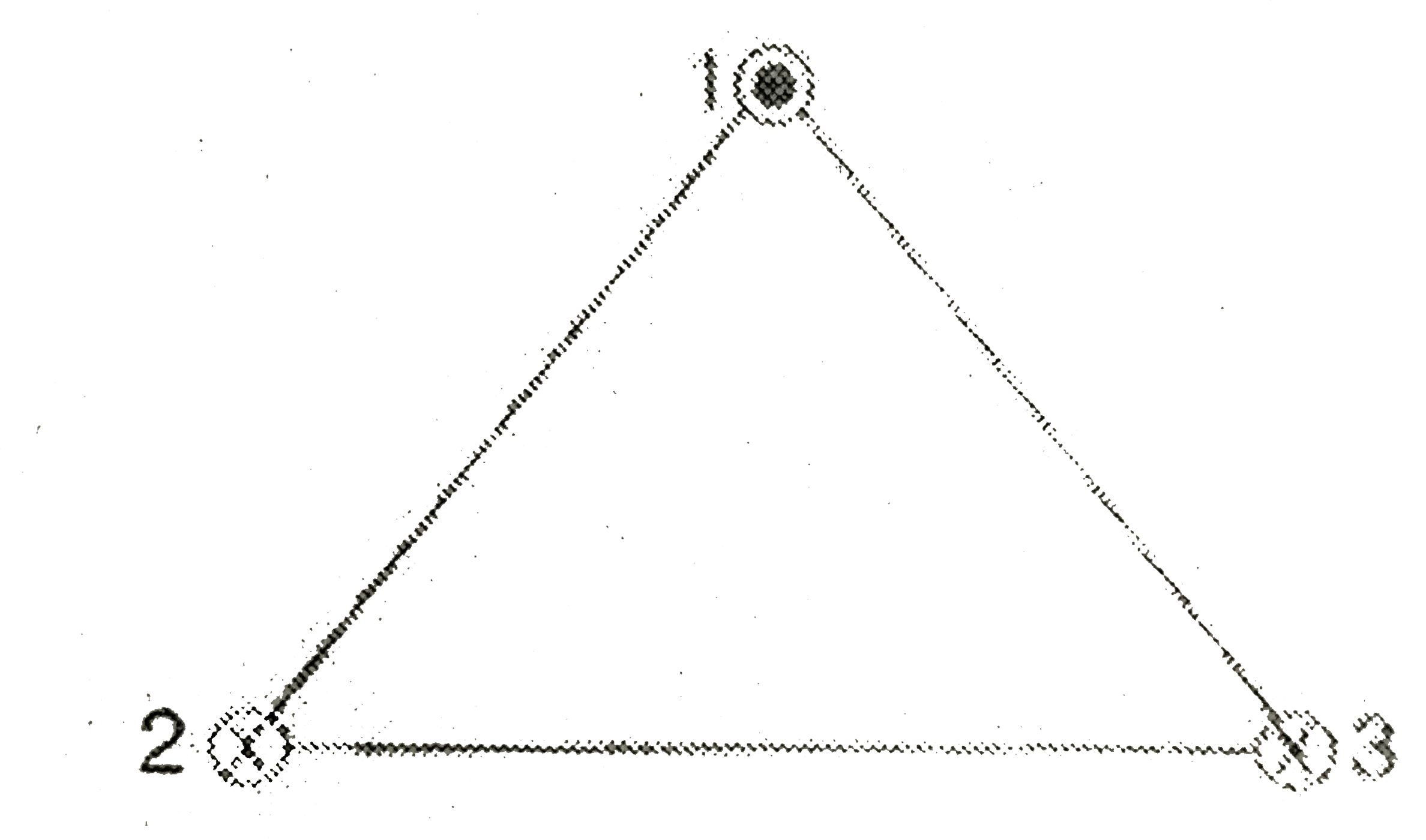
F1 is the magnitude of force on wire 1 and F2 the magnitude of force on wire 2. Then
View Solution
